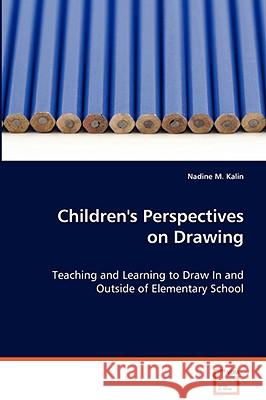Children's Perspectives on Drawing » książka
Children's Perspectives on Drawing
ISBN-13: 9783639071832 / Angielski / Miękka / 2008 / 128 str.
This book investigates children's preferred strategies for learning to draw. Twenty-six Grade 6 students engaged in three different drawing tasks (observation, feeling, and cartoon), and generated their favoured strategies for improving their drawing skills. Students then ranked their top three strategies for each drawing task. In addition, six students were interviewed about their drawing experiences and development, both inside and outside of school. Results indicated that the participants desired to improve their drawing skills through a variety of strategies that reflected their outside of school practices such as copying, tracing, getting ideas from others, drawing with others, and watching TV to get ideas. Help provided by the teacher and through interactions with others were also highly favored. The interview results further outlined participants' desires to improve, their perceptions of a lack of help for drawing at school, and the importance of significant others in their drawing development. Recommendations are suggested for classroom teachers to incorporate learners' ways of knowing, thinking, and representing in art education."
This book investigates childrens preferred strategies for learning to draw. Twenty-six Grade 6 students engaged in three different drawing tasks (observation, feeling, and cartoon), and generated their favoured strategies for improving their drawing skills. Students then ranked their top three strategies for each drawing task. In addition, six students were interviewed about their drawing experiences and development, both inside and outside of school. Results indicated that the participants desired to improve their drawing skills through a variety of strategies that reflected their outside of school practices such as copying, tracing, getting ideas from others, drawing with others, and watching TV to get ideas. Help provided by the teacher and through interactions with others were also highly favored. The interview results further outlined participants desires to improve, their perceptions of a lack of help for drawing at school, and the importance of significant others in their drawing development. Recommendations are suggested for classroom teachers to incorporate learners ways of knowing, thinking, and representing in art education.











